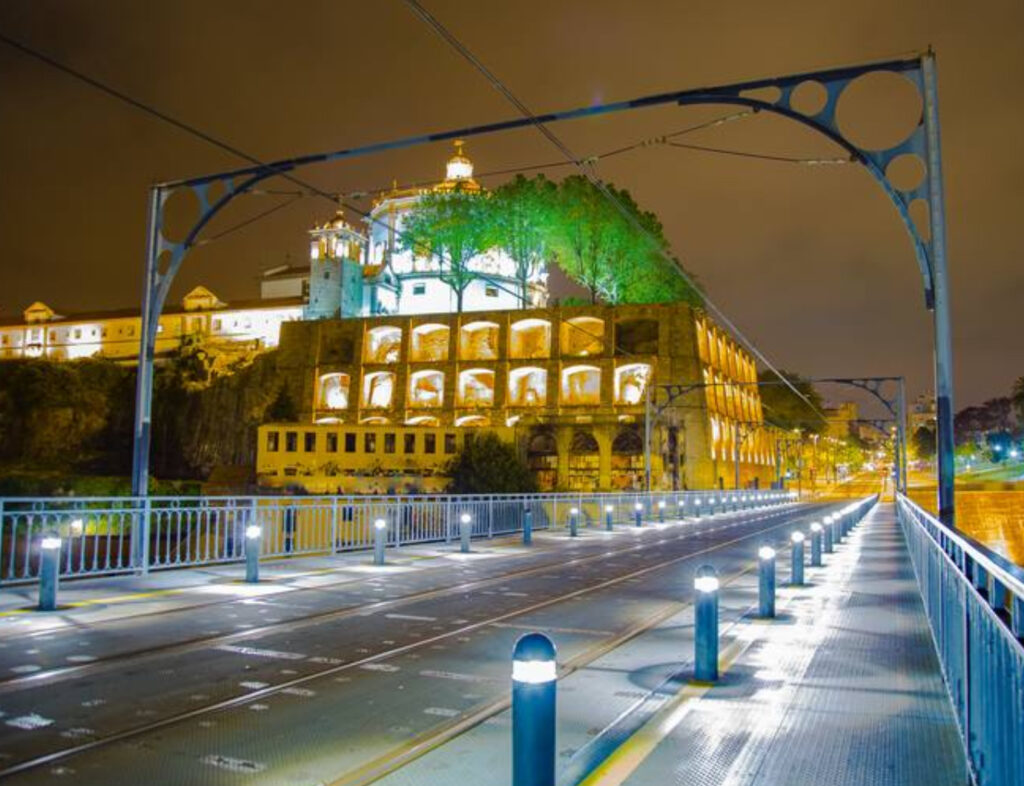Porto, Portugal’s second-largest city, has long captivated visitors with its stunning landscapes, historic architecture, and atmospheric charm. At night, the city transforms into an enchanting scene of shimmering lights reflected in the Douro River, its cobblestone streets and historic bridges offering an otherworldly beauty. This nocturnal spectacle has inspired artists, photographers, and writers for generations, including M. Tchaikovsky, whose work, Porto at Night: Europe #2, captures the essence of this magical cityscape.
In this exploration, we’ll focus into the cultural and historical significance of Porto, the city’s influence on art and literature, and the unique qualities that make it one of Europe’s most beloved destinations. Through the lens of Tchaikovsky’s evocative artwork, we’ll celebrate the allure of Porto after dark, a time when the city comes alive in a symphony of light, color, and history.
A City Steeped in History
Porto is a city that wears its history proudly. From the Roman occupation to the Age of Exploration, its story is deeply intertwined with Portugal’s identity. Known as the birthplace of port wine, it was declared a UNESCO World Heritage Site in 1996 for its exceptional cultural and historical value.
The city’s architecture reflects centuries of evolution, from medieval churches and Baroque facades to neoclassical buildings and modernist influences. At night, these landmarks take on a different character, illuminated by streetlights and the soft glow of the river. This transformation is central to Tchaikovsky’s work, as he captures Porto’s unique interplay of light and shadow.
The Nocturnal Beauty of Porto
When the sun sets over Porto, the city enters a state of quiet majesty. The Ribeira district, with its colorful buildings and lively atmosphere, becomes a dreamscape, where the warm hues of the day give way to cooler tones illuminated by streetlights and the moon. The Dom Luís I Bridge, an iconic feat of 19th-century engineering, glows like a beacon over the Douro River, connecting Porto to Vila Nova de Gaia.
M. Tchaikovsky’s Porto at Night: Europe #2 beautifully encapsulates this atmosphere. His artwork is a symphony of contrasts: the inky blues of the night sky, the warm golden lights reflecting in the Douro, and the intricate silhouettes of the city’s architectural gems. These elements combine to evoke a sense of timelessness, a reminder that Porto’s nocturnal beauty is as enduring as its history.
The Douro River: A Source of Inspiration
The Douro River is the lifeblood of Porto, a natural artery that has shaped the city’s economy, culture, and identity. At night, its still waters act as a mirror, doubling the visual impact of the illuminated skyline. This duality is a key feature of Tchaikovsky’s depiction, where the river becomes both a subject and a canvas.
The river has inspired countless artists and writers, serving as a metaphor for reflection, journey, and connection. It’s no surprise that Tchaikovsky, whose work often explores themes of light and movement, chose to focus on this element in his portrayal of Porto. The Douro, with its ability to reflect and transform, becomes a poetic symbol of the city’s enduring spirit.
The Role of Light in Art and Architecture
One of the most striking aspects of Porto at night is its use of light. The city’s illumination highlights its architectural splendor while creating a sense of intimacy and mystery. This interplay of light and shadow is a hallmark of both Porto’s nocturnal identity and Tchaikovsky’s artistic style.
In Porto at Night: Europe #2, light is more than a practical necessity; it is an emotional and aesthetic force. The streetlights cast a warm, inviting glow, while the illuminated bridge stands as a symbol of connection and progress. This careful attention to lighting mirrors the techniques of Baroque painters like Caravaggio, who used chiaroscuro to create drama and depth.
Porto’s Influence on Art and Literature
Porto has been a muse for artists and writers throughout history. The city’s unique atmosphere—a blend of old-world charm and vibrant energy—has inspired works ranging from Fernando Pessoa’s poetry to modern photography.
Tchaikovsky’s work continues this tradition, offering a contemporary interpretation of Porto’s timeless appeal. His focus on the city at night reflects a growing interest in exploring urban landscapes through a lens of abstraction and emotion. By capturing the interplay of light, water, and architecture, he creates a visual narrative that resonates with viewers on both a personal and universal level.
Cultural Traditions and Nightlife
Beyond its visual beauty, Porto at night is a hub of cultural activity. The Ribeira district comes alive with the sounds of fado music, the clinking of glasses, and the laughter of locals and tourists. This vibrant nightlife adds another layer to the city’s nocturnal charm, blending tradition with modernity.
Tchaikovsky’s artwork hints at this lively atmosphere, even as it focuses on the stillness of the river and the majesty of the skyline. His ability to capture both the serenity and the energy of Porto at night is a testament to his skill as an artist and his deep connection to the city.
Themes of Reflection and Connection
At its core, Porto at Night: Europe #2 is a meditation on reflection—both literal and metaphorical. The river’s mirrored surface invites viewers to contemplate the relationship between past and present, light and dark, reality and imagination.
This theme of reflection is particularly poignant in the context of Porto, a city that balances its rich history with a dynamic, forward-looking spirit. Tchaikovsky’s work captures this duality, reminding us that the beauty of a place lies not only in its physical attributes but also in the stories and emotions it evokes.
The Universality of Nightscapes
While Tchaikovsky’s work is rooted in Porto’s unique identity, it also speaks to a universal appreciation for the beauty of nightscapes. Across cultures and continents, cities take on a different character after dark, becoming places of mystery, romance, and introspection.
In this sense, Porto at Night: Europe #2 transcends its specific setting, inviting viewers to reflect on their own experiences of night and light. Whether it’s the shimmering canals of Venice, the illuminated Eiffel Tower in Paris, or the vibrant streets of Tokyo, nightscapes hold a universal allure that connects us to the world and to ourselves.
Impression
M. Tchaikovsky’s Porto at Night: Europe #2 is more than a work of art; it is a love letter to a city that has captivated hearts and minds for centuries. Through his masterful use of light, color, and composition, Tchaikovsky brings Porto’s nocturnal beauty to life, offering viewers a glimpse into its soul.
Porto, with its rich history, vibrant culture, and breathtaking landscapes, is a city that invites exploration and contemplation. At night, it becomes a place of magic and wonder, a testament to the enduring power of art, architecture, and human connection. Tchaikovsky’s work reminds us that beauty can be found in the quiet moments, in the play of light on water, and in the stories that cities like Porto have to tell.
No comments yet.








